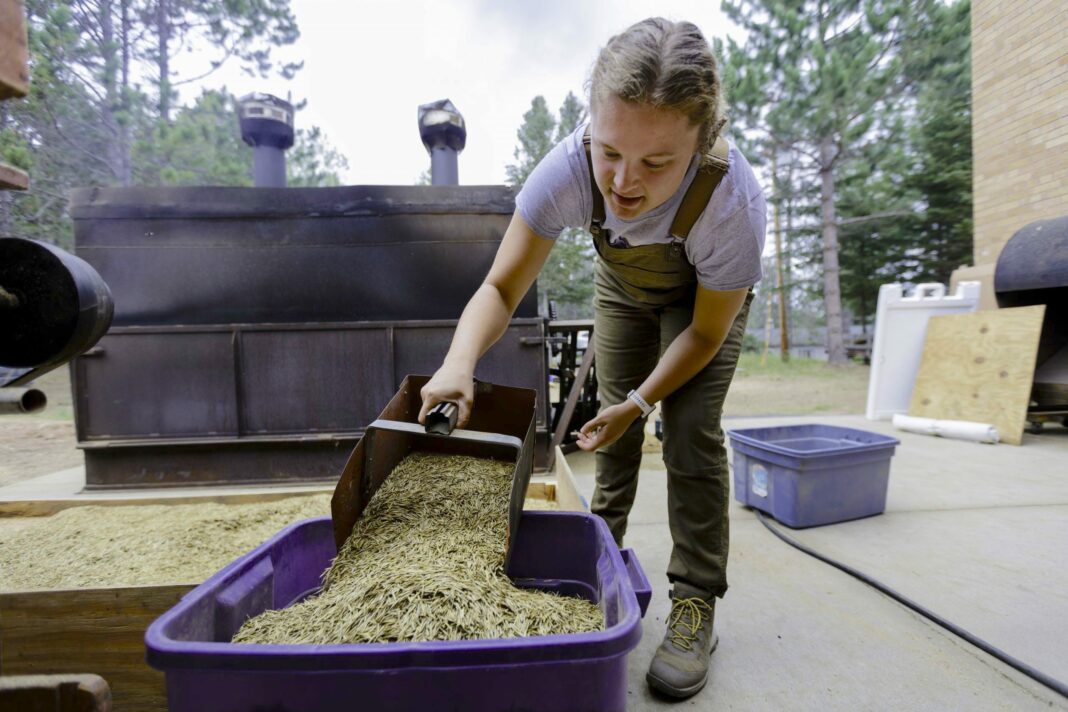The Wild Rice House is focused on preserving and advancing a community model for seasonal and sustainable harvesting of this traditional food.
On this low, gray, fall morning, I’m arranging foam blocks on the bottom of a canoe, readying a spot for my fanny. As “knocker,” I’ll be sitting for hours, using two peeled and sanded thirty-inch cedar wood sticks, each about an inch around, to bend hundreds — even thousands — of three-foot stalks over the edge of our canoe, prompting long, slender, elongated grains of Zizania palustris (wild rice) to fall into my lap.
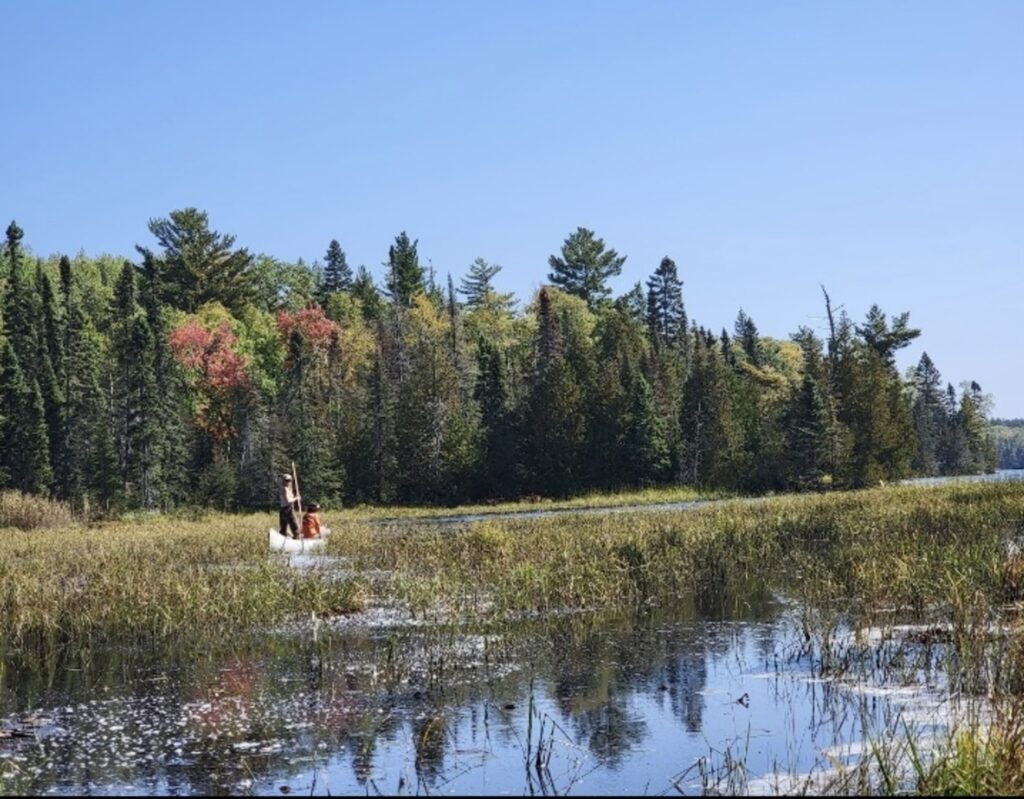
Wild rice is one of the only grains native to North America, and northern Minnesota, where I am, is the heart of rice country. Rice likes to have its feet in the muddy, shallow waters of lakes and streams of the Upper Great Lakes region, where it serves as a cultural and spiritual keystone for native peoples, and a food staple for many.
In northern Minnesota, an invitation to spend a day harvesting wild rice is a little like getting the golden ticket. As a rule, people share their foraging and harvesting locations only with family and close friends. I am honored to be asked by my neighbor and friend, Marc Smith. But I’m willing to work hard and tolerate a day with spiders, rice worms, and iffy weather — all traits necessary in a ricing partner.
We have set out from Finland, a funky little town of 208 people in Minnesota’s Arrowhead Region. It sits back from the cliffs and weather of Lake Superior’s North Shore, and just on the edge of Superior National Forest. The town’s history is agricultural — surprising for a place that experiences winter eight months of the year. Founded by nothing-to-lose Finnish immigrants who carved farms out of thick timber and poor soil, traded with fishing families on the shore, and took advantage of plentiful game in the woods and fish in the lakes, Finland thrived even during the Great Depression.
Finland remains unchanged in many ways, with a century-old general store — the only store in town — managed and owned collectively. A thriving farm scene, led by the Finland Food Chain, hosts a Farmer’s Market, organizes seasonal community feasts, and launches projects that support a fully realized local food system. People here are deeply invested in seasonal food harvesting, foraging, and hunting.
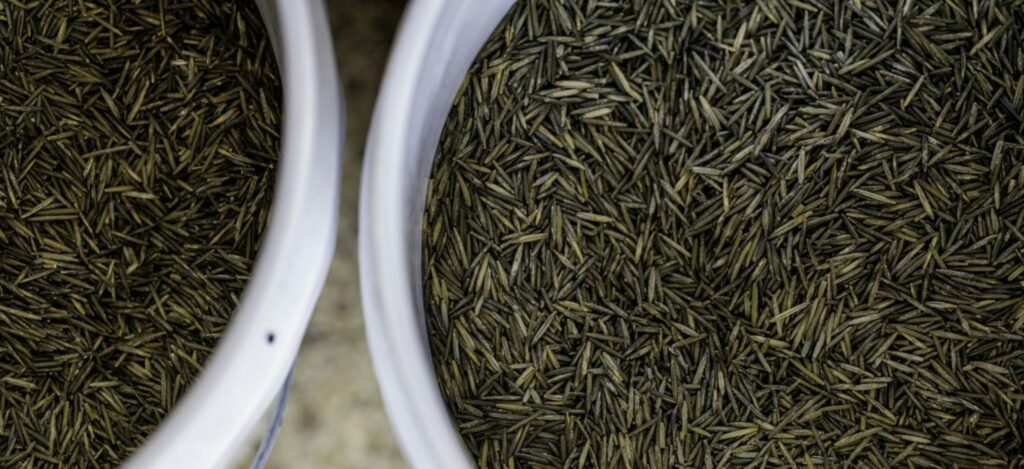
A break-even, non-profit spin-off of the Finland Food Chain project, the Wild Rice House is partially housed — literally — in an abandoned elementary school, with a new timber frame roof providing shelter to the smoky, roaring parcher. The Rice House was designed to meet the community needs of a small village.
Now, inside the Wild Rice House, Blake Hawbaker is expertly managing a SUV-sized, woodfired parcher that’s puffing smoke like a dragon. When I drop off my two, thirty-pound bags of green rice, Hawbaker looks hot and tired. In high season, he’s juggling more than meets the eye. The ancient machinery used to process rice is a handyman's dream, and Hawbaker, who describes himself as a “very mechanically inclined person,” is the Rice House’s workhorse: half mechanic and half artist.
Now in its third year, the rice house is already operating at capacity. “One of our goals has been to find and train people who could help here long term, or start the same thing in their communities,” says Meghan Mitchell, coordinator for the Wild Rice Project, an adjacent program that partners new harvesters with experienced mentors and offers apprenticeships in the processing plant to teach newcomers how to cook rice.
“We have to expand our knowledge and skills, because so many of the people who know how to do this are aging out and retiring,” Mitchell says. “Even getting machinery to do the processing is hard.”
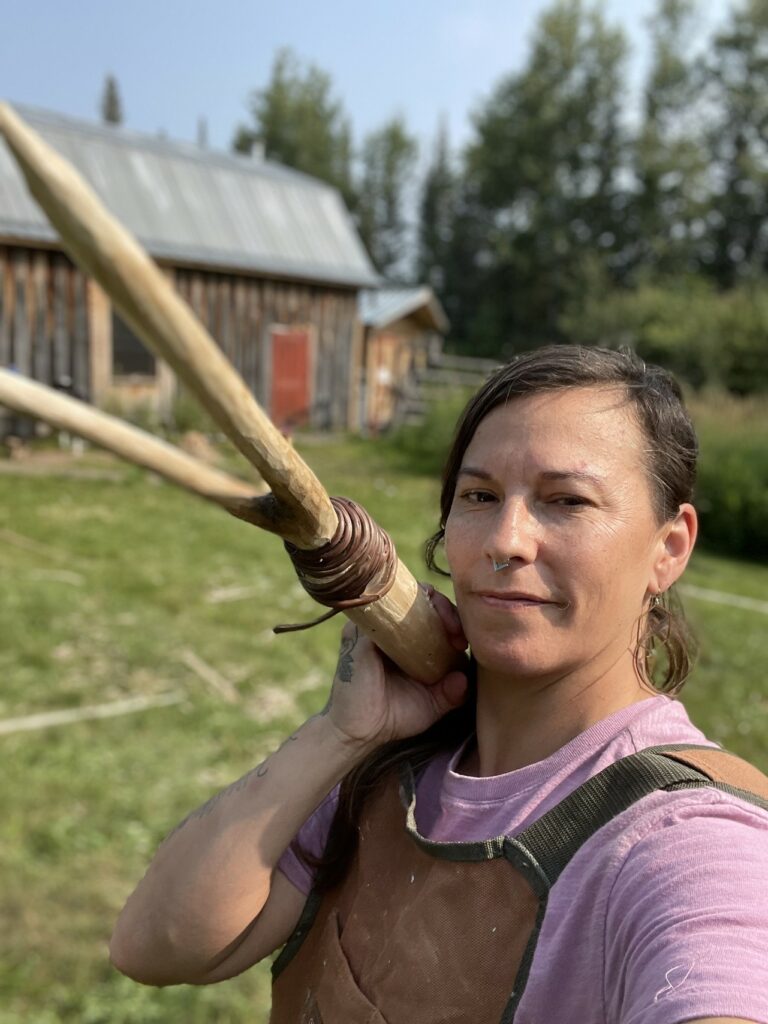
“Our main goal is to figure out how to reproduce this model and share it with others,” Mitchell explained. “We want to serve our local community first, and always for people harvesting for their personal use. But we’re already turning people away.”
It’s true. For a few weeks at the end of August and early September, a steady stream of cars arrive, loaded down with canoes, push poles, and muddy, happy people speaking loudly over all the racket. “How’s the rice?”
To understand the need for a small-town rice processing plant, one must understand that wild rice is to Minnesota what maple syrup is to Vermont. It’s the food of place, deeply tying people to home and giving meaning to celebrations and ceremony.
But this wild food is also integral to Minnesota’s Anishinaabe people, both spiritually and materially. It’s a staple food that’s also the foundation of their migration story — their journey to “the place where food grows on water.”
Also valuable to industrial agriculture, wild rice is the center of genetic patenting efforts, a development that concerns those who view rice as more than a commodity. Wild rice grown in California is sold here, but only to those who don’t know the difference: true wild rice is a rich deep brown, while “paddy rice” is black. Authentic wild rice perhaps ought best to be called manoomin, its proper Ojibwe name.
International mining interests are attempting to gain permitting for copper-nickel mines that would impair wild rice waters but provide needed jobs to rural communities, creating tension and fraught political battles. Simultaneously, tribal groups are challenging the State of Minnesota to enforce water quality laws already on the books, while creating precedent by granting manoomin rights.
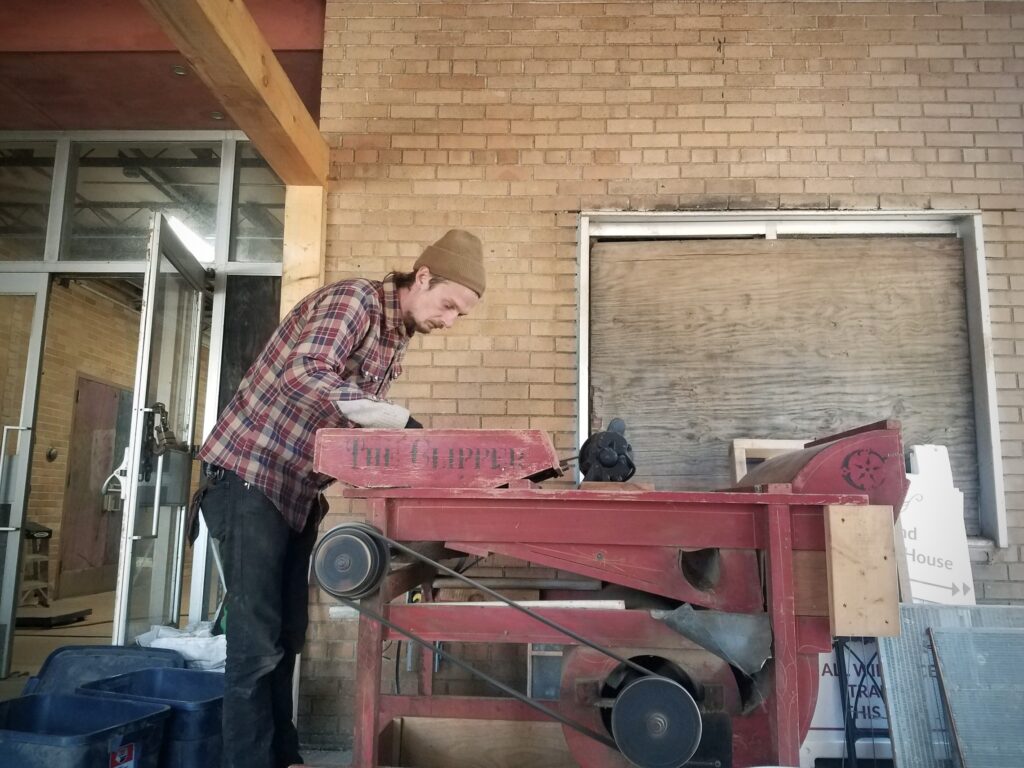
Attorney and Minnesota Chippewa Tribe member Frank Bibeau has worked through tribal courts to exert treaty rights, forcing the protection of freshwater resources and habitat on which the rice depends. His work, recognized internationally, aligns with the work people at the Finland Wild Rice House are attempting — to export this non-profit, small-batch processing model to other communities. Which is one of the reasons why he hosted Hawbaker for a three-day lesson in cooking rice back in 2019.
“This isn’t a cake mix,” Bibeau explains. His relationship with rice goes back to childhood and was a source of family income for several previous generations. “It’s a process, and it’s a science. But mostly, it’s an art. Each step has a purpose and will affect that specific batch of rice. The rice changes, because it’s alive, and learning to hear the rice is just as good as using a thermometer.”
But Hawbaker still relies on technology, even though he’s gained hundreds of hours of cooking experience since his days at Bibeau’s rice camp. Aiming his infrared thermometer at one end of the rice parcher, he said, “Someone worked hard for this rice, and I don’t want to ruin a batch or waste even a kernel. Frank impressed upon me the trust that people have in giving you their rice. I feel that.”

Indeed. My sixty pounds of green rice transformed into thirty pounds of deep brown grain after processing, which I then split with my ricing partner, lugging the reinforced white sandbags full of grain to his house outside of town. Harvesting my own rice makes me feel part of this community, part of where I live. I feel rich, full, and ready for the coming winter.
Wild rice is complicated. It is sacred, loved, commodified, and fought over. And, as Mitchell and Bibeau point out, it is always in danger from development, pollution, greed, and — increasingly — climate change. Mitchell and Hawbaker are preparing to attend a wild rice symposium later this month, where they will promote their community model and bring back ideas to share locally.
“We’re talking about wild food. Food that is good for the spirit and the soul,” Mitchell says. “Each person we trained is now an advocate for rice. Once you understand the relationships between rice and place, rice and community, rice and food, you can’t help but act.”


